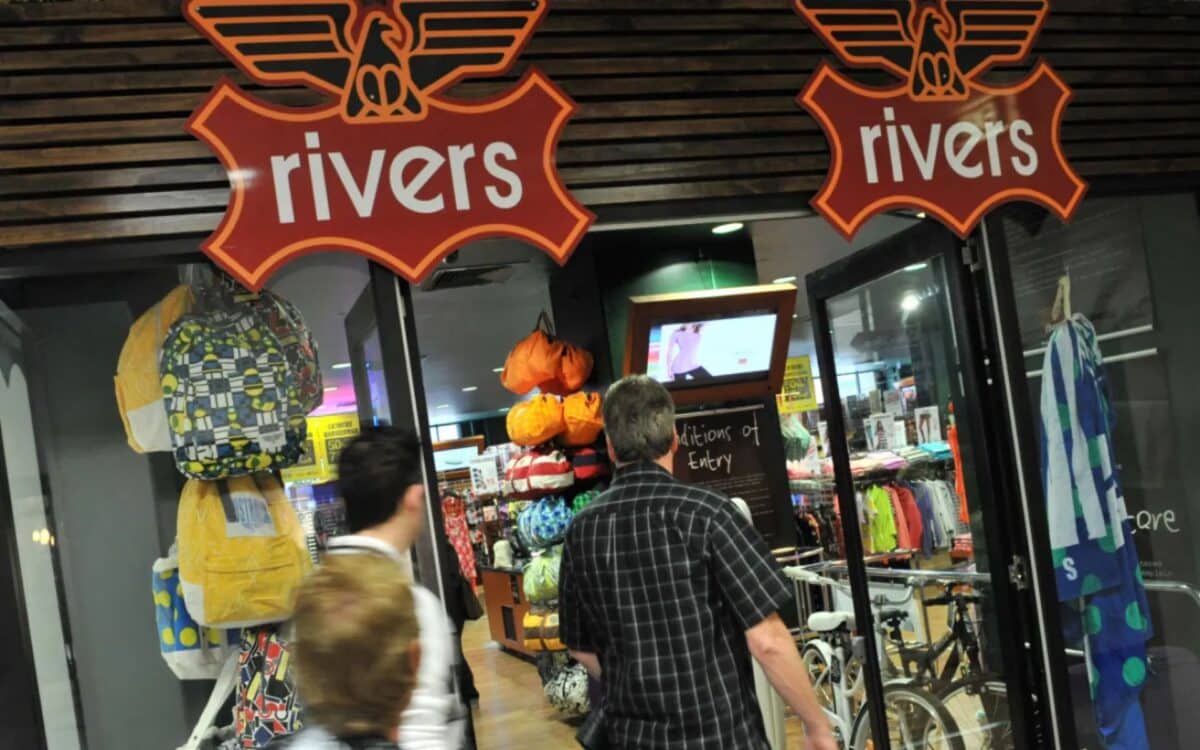After decades as a prominent fixture in Australia’s retail landscape, Rivers, a well-known clothing and footwear brand, will close its doors permanently. Receivers for the brand have confirmed the decision after failing to secure a buyer, bringing the company’s storied journey to an unfortunate close.
This move is set to impact hundreds of employees and customers who have remained loyal to the brand since its inception.
The closure of Rivers reflects the increasing struggles traditional retail businesses face in adapting to the changing demands of a highly competitive market.
While Rivers once thrived by diversifying its offerings and embracing innovation, the evolving landscape has posed significant challenges for long-established brands.
The Rise of Rivers
Rivers’ journey from a small footwear store to a household name in Australian retail highlights its significant role in shaping the industry. Over the years, the company successfully balanced tradition with innovation, expanding its offerings to meet the needs of an ever-changing consumer base.
Its ability to adapt quickly, combined with a focus on quality, allowed Rivers to become a staple for shoppers across the nation.
Humble Beginnings
Founded in 1979, Rivers started as a specialty men’s footwear retailer with its first store in Sydney’s George Street. The company quickly grew to include women’s footwear and apparel, adapting to market demands.
Notably, Rivers became a trailblazer in the digital retail space, launching one of Australia’s first e-commerce websites in 1999.
This early embrace of online retail showcased the brand’s foresight and commitment to staying ahead of industry trends.
Adapting to Change
- Expanded product offerings to include homeware and bedding.
- Acquired by Noni B Holdings (now Mosaic Brands Ltd) in 2018.
- Operated four mega outlets in 2023, integrating products from sister brands.
These milestones reflect Rivers’ efforts to diversify its portfolio and remain a competitive force in the evolving retail landscape.
Evolving to Meet Modern Retail Demands
Over the years, Rivers diversified its offerings to stay relevant in a competitive retail market. Its ability to shift from traditional men’s footwear to a broad lifestyle brand highlighted its agility, but challenges persisted in an increasingly digital-first retail environment.
The Final Chapter
The closure of Rivers not only impacts employees and customers but also signals a significant turning point for its parent company, Mosaic Brands Ltd. Once a key player in the Australian retail industry, Mosaic’s struggles with financial instability have now forced a wider reevaluation of its business operations and sustainability.
Mosaic Brands’ Financial Struggles
Rivers’ parent company, Mosaic Brands Ltd, faced significant financial challenges that led to its administration in October last year. Mosaic also oversees other popular retail names like Millers, Katies, Crossroads, and Noni B.
However, the broader economic climate and disruptions in retail proved insurmountable.
Key Impacts of Closure
- 136 stores nationwide to close by April.
- 650 employees to lose their positions.
- Loyal customer base left without access to the brand.
Receivership and Closure
KPMG Receiver and Turnaround & Restructuring Partner David Hardy stated that efforts to sell the brand were unsuccessful.
- “Unfortunately, a sale of Rivers was not able to be achieved… this means the Receivers have made the difficult decision to wind down this iconic Australian brand,” Mr. Hardy explained.
- He also expressed gratitude to Mosaic employees and Rivers’ customers for their dedication during this challenging period.
Rivers’ Legacy and the Future of Retail
The closure of Rivers underscores the challenges faced by traditional retail businesses in adapting to a rapidly evolving market dominated by online competitors. Despite its innovative early steps into e-commerce, Rivers’ struggles reflect broader trends impacting mid-tier retailers globally.
In the end, the story of Rivers is not just about the end of a brand but a reminder of how even iconic names must constantly evolve to survive in the modern retail era.









